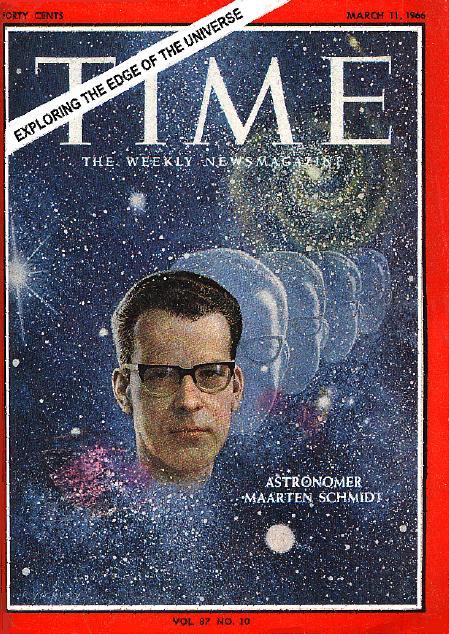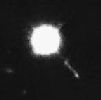Normal stars like the sun are known not to be strong radio sources so 3C273 and other similar "radio stars" were dubbed Quasi-Stellar Radio Sources soon shortened to quasar.
The first spectrum of 3C273 was obtained by Caltech's Maarten Schmidt using the Palomar 200" telescope. Schmidt puzzled over the photographic spectrum for months before he recognized that the strong, broad emission lines in the star were the familiar hydrogen-Balmer series, but redshifted by 15%.
 Astronomer Maarten Schmidt in 1963 |
It was
not the 15% redshift that had puzzled Schmidt, galaxies were already known
with much larger redshifts, but rather the brightness of 3C273. 3C273 was a
thousand times brighter than even a very luminous galaxy would appear at a
distance of 2 billion light years, corresponding to a redshift of 15.8%.
Biggest puzzle from afar. How unlike the other ones, Brighter than a trillion Suns. Twinkle, twinkle, quasi-star, How I wonder what you are! |
